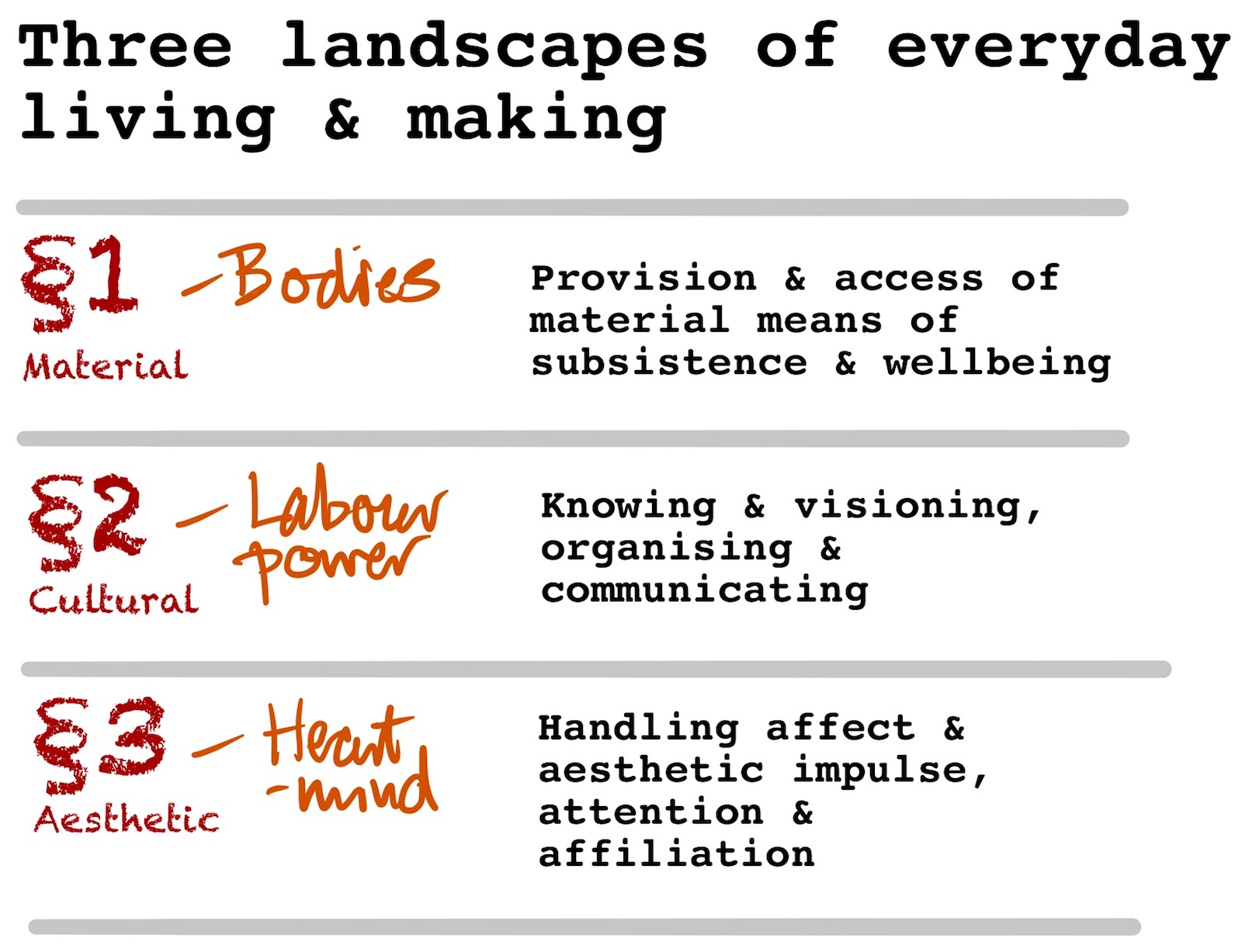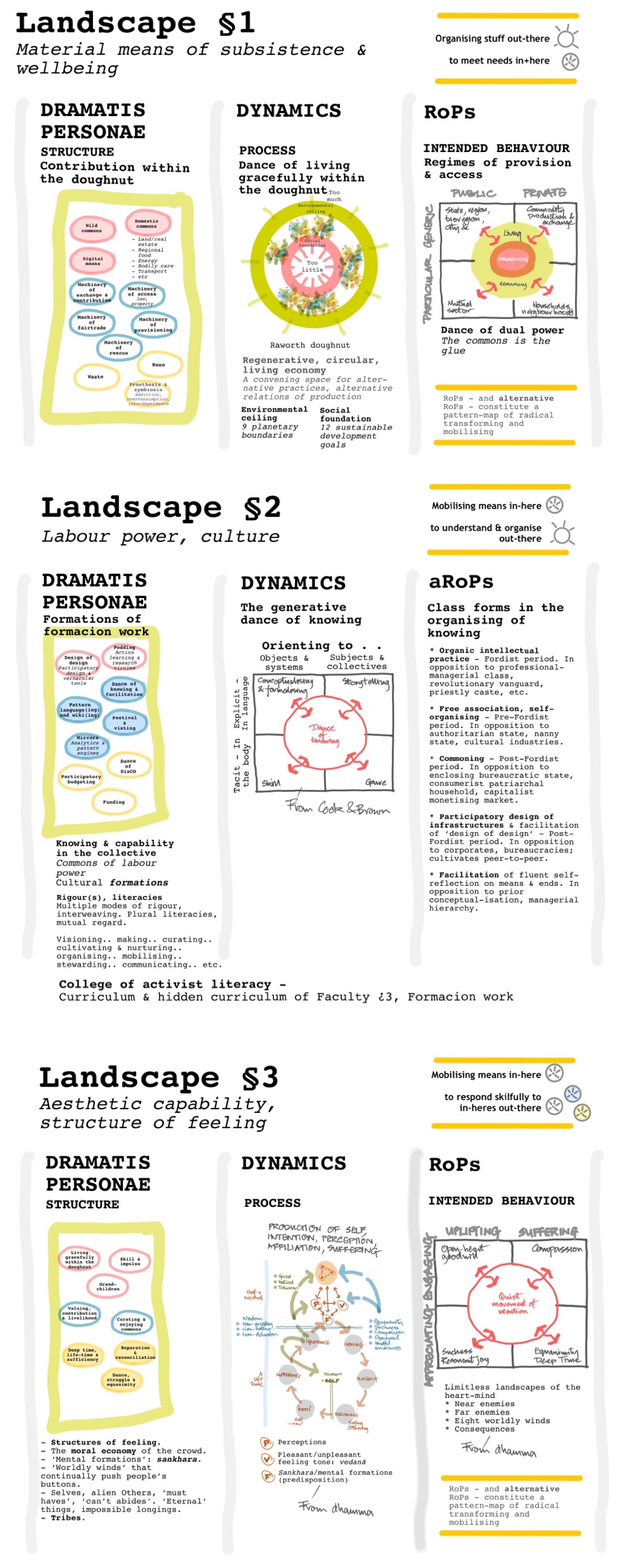The three landscapes frame the *materiality* of a practice of making the living economy.

Three landscapes of/in practice - Weft in a weave
Each landscape can usefully be characterised using a system map. A system map in fact comprises *three* schemas or frames, which identify the characteristic *behaviour*, the characteristic *processes* and dynamics, and the significant *structure* of the system.
- A behaviour map characterises the *altered social relations* that we mean to see emergent, and eventually, dominant, as practices in the ’new’ economy become established, and interwoven into formations of prefigurative practice, in the face of present, hegemonic RoPs.
- A *process map* identifies the kinds of weaving, emergence and transformation that are characteristic with this kind of material, and thus frames a choreography of many kinds and moments of practice, with dynamics in various dimensions, on various timescales.
- A *structure map* characterises the ‘dramatis personae’ - core institutions and personae - and kinds of venues (locations or ‘stages’) in which significant performances in the landscape occur. In the foprop frame, these institutional locations are characterised by the main pattern families of a landscape: each family of patterns engages one particular kind of situation. Each family is stewarded by a particular school of the college. We thus have material institutions, cultural institutions and aesthetic or emotional institutions.
Each of the three §landscapes in the foprop frame needs characterising in these terms: its altered relations of production (aRoPs), its dynamics (processes, 'dance') and its dramatis personae (its pattern families). At this stage of the pattern language, the sketches are largely provisional. Refining them and populating the schools - the pattern language(ing) - is the basic ongoing work of the college.

System maps - Threee landscapes
In this present section there is more on the material landscape §1, regarding the kinds of *material stuff* that must be handled, in a living economy that serves the grandchildren’s grandchildren as well as those presently living; this is necessarily a big historical frame.
In a core sense, this organisation of material stuff *is* the (real) economy, and understanding how landscape §1 is articulated, and can be differently articulated, is the core of the curriculum.
Landscape §2 - the landscape of knowing and capability - comes in for attention in the following section, and landscape §3 - the aesthetic landscape - later in this chapter.